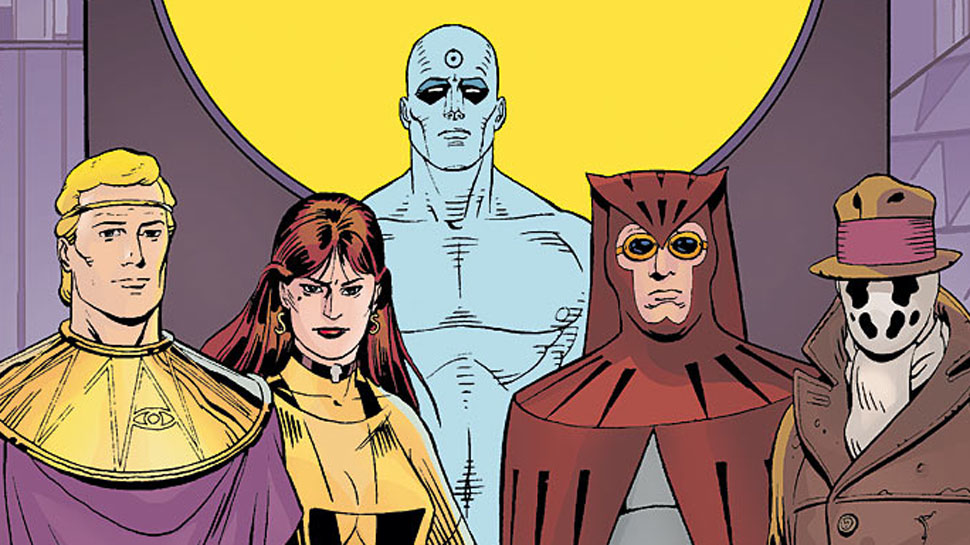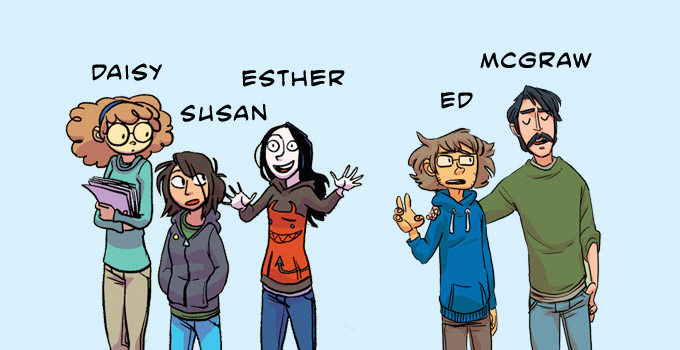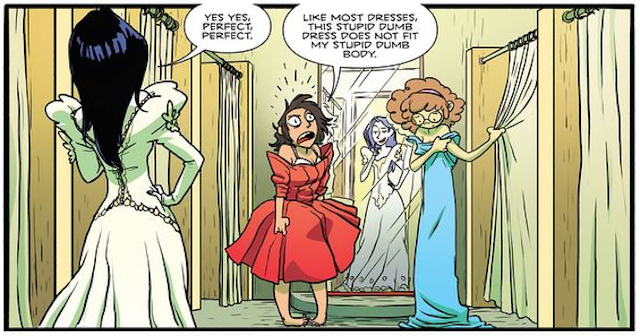Though ‘The Superfluous’ is primarily focused on works of fiction and the elasticity in narrative, old habits die hard and, from time to time, rear their heads on this platform in the form of opinion-editorials or long-form critical analysis. In this first of likely many more pieces, the examination of DC Comics’ Doomsday Clock wonders if a gambit of such magnitude will pay off or mark the first real hiccup since DC’s Rebirth initiative in 2016.
** THIS ARTICLE CONTAINS SPOILERS FOR WATCHMEN AND DOOMSDAY CLOCK **
Is Geoff Johns still a brilliant writer, or has he lost his touch? Is this a provocative start of a magnum opus, or a thin opening salvo with little substance? Do I not ‘get’ it, or is this just a boring comic? I don’t know how I feel about Doomsday Clock #1, an issue that feels simultaneously exciting and bland, super-important and super-unnecessary, and most of all, strangely mediocre.
Some quick context: Doomsday Clock #1 is one of the biggest comic book releases of 2017,  a palpable nexus of comic nostalgia, cultural intrigue, and aggressive marketing that connects the current DC comic book universe to Alan Moore’s seminal 1986 masterpiece, Watchmen, a twelve-issue series that changed the comic book landscape by exploring moral relativism in flawed characters through Chekhovian takes on traditional superhero tropes.
a palpable nexus of comic nostalgia, cultural intrigue, and aggressive marketing that connects the current DC comic book universe to Alan Moore’s seminal 1986 masterpiece, Watchmen, a twelve-issue series that changed the comic book landscape by exploring moral relativism in flawed characters through Chekhovian takes on traditional superhero tropes.
Like the second Wally West, Mark Millar’s Civil War, or Rob Liefeld, Watchmen tends to divide comic book fans. There are many that feel Watchmen is a stand-alone work that shouldn’t be adapted or translated or built upon because that would fly in the face of one of the book’s central conceits (the dangers of corporatization and editorializing of power) as well as betray Moore’s expressed wishes concerning the issue. I’m also sure there are super-fans out there who gobble up any and all Watchmen-related media, including every DVD/Blu-Ray release of the 2009 cinematic film, all the Before Watchmen limited series/one-shots in 2012, and each new reissue of the original graphic novel; be still their beating hearts for the upcoming HBO adaptation (but even I’m stoked for that after three seasons of showrunner Damon Lindelof’s exquisite The Leftovers.)
But the response I’ve experienced the most when it comes to expanded Watchmen material is ambivalence. Much like how I don’t like Nirvana but can still recognize the band’s contribution to the overall growth of the American music scene, so too is Watchmen positioned as a modern classic, an undeniable high watermark of the format with subtle, scathing commentary on the broader medium, the superhero genre in particular, and the socio-political implications of the US-Soviet Cold War.
Unlike Nevermind, however, Watchmen exists in a medium that encourages expansion, et al. (upon preexisting characters, settings, concepts, etc.) and fans of the superhero genre aren’t deluded enough to believe every single story they read is going to be a winner. It’s hard to find anyone talking smack about Watchmen, and for good reason – even if you don’t necessarily like the story, the book’s value as an iconic piece of comic book culture is undeniable. Even when the brand is arguably tarnished by every Before Watchmen series aside from Minutemen and Ozymandias, that doesn’t detract from the original’s quality.
What happens, then, when one of the industry’s brightest stars sets out to connect Moore’s dystopian vision of a world jaded on superheroes with the DC’s increasingly-lighthearted and exaggerated fare? The answer is Doomsday Clock, which apparently means meandering through a joyless first issue that does little to provide context for regular DC readers, even less to help lapsed fans looking to jump back in, and next to nothing for new readers who will be lost within five pages.
I admire that Johns sought to reflect real-world tensions through President McKinley’s rise to power and the installation of state-sponsored media, but a concept that probably sounded like dynamite in the writer’s room feels ham-fisted in practice. A Trump allegory just seems lazy when Ozymandias literally killed three million people at the end of Watchmen; fear of genocide is not imaginary paranoia when it actually happened, but rather real fear over a real threat that has a very real possibility of returning without warning. I’m not arguing for a police state in the wake of a national tragedy, but to frame a post-Watchmen landscape as anything less than desperately afraid seems half-hearted and not nearly insightful enough as to how American’s process fear.
Even after multiple readings, I simply don’t feel John’s went far enough in his depiction of a world ravished by a madman with a god complex, and that reintroducing Adrian Veidt through a single character’s unconvincingly-vague tantrum detracts from Veidt’s subtle cruelty and makes him feel like a set piece in Johns’ plot-driven story that lacks emotional clarity or depth.
Or perhaps Ozy’s sequence the perfect allegory for Watchmen, the portrayal of normalized obfuscation, willful ignorance of deception in plain sight, and infatuation with perceived anti-heroes tortured by hard choices. Maybe Adrian’s muted entrance a sign of Doomsday Clock’s gravity, that bringing back such an important character so nonchalantly perhaps means something much, much bigger is coming down the line.
Meta-context goes a long, long way in understanding and appreciating Doomsday Clock, which is like catnip for fans and (excuse the cliché) Kryptonite for those haven’t read hundreds or thousands of comics, studied decades of superhero histories, and spent countless hours weighing opinions and arguing theories online.
The first thing to keep in mind is that Watchmen deconstructs superhero stories the way The Cabin in the Woods does with horror films: each utilizes the traditional tropes of their respective genres to inform the story, then proceeds to eschew the familiar by picking said tropes apart. While Cabin in the Woods goes for the unexpected, Moore opts for gritty realism and uncomfortable relatability. The characters are meant to reflect human nature as our worst inclinations slowly overtake compassion and hope: Rorschach is an extremist ideologue, Nite Owl a bundle of nerves constantly struggling to live up to his namesake, Silk Spectre full of insecure pride, Doctor Manhattan a confused sociopath with a god complex, and Ozymandias the epitome of self-serving elitism.
The next piece of the Doomsday Clock puzzle concerns Geoff Johns, lifelong superhero fan who fundamentally revitalized the Green Lantern franchise to incredible ends from 2004 through 2012, became Chief Creative Officer of DC Entertainment, broke the DC timeline irreparably with 2011’s Flashpoint, penned the flagship Justice League series for five years, and masterminded last year’s Rebirth initiative that brought back the pre-Flashpoint DC continuity with elements from the ‘New 52’ era sprinkled in for good measure, to which nearly everyone exclaimed, “FINALLY!” in unison across the inter-webs like a prayer of thanks. Today, Doomsday Clock is the only comic Johns is writing because he’s busy trying to save DC’s Extended Universe cinematic franchise before Zak Snyder’s toxic pall over all the ‘phase one’ movies aside from Wonder Woman threatens to cut the legs off of DC’s future in large-scale cinematic ventures.
Suffice it to say, Johns is a seasoned comic book fan and experienced professional with years of insight both in and out of the industry that gives him a unique perspective on these timeless characters. I was (I feel) appropriately excited when I first read that he was writing a story he believed captured the essence of Watchmen without betraying its core tenets, a narrative that would evoke the darkness of Moore’s visionary tale through the DC framework to marry the concepts in a unique way that would elevate both.
More than most fans (at least, in my experience), I lean towards optimism when it comes to comic books, often having to force myself to read with a critical eye when my inner fanboy wants to flail about over big reveals and shocking double-page spreads, so it seemed like Doomsday Clock would be right up my alley, and that one of my favorite writers getting the opportunity to tell the story of a lifetime was a sure bet for my pull box.
But now, I’m not so sure; for someone so well-versed in superhero fare, Johns’ writing falls disappointingly flat in Doomsday Clock #1, a frustratingly-light opening act saddled with over three decades of emotional baggage yet none of the cohesion to make any of it meaningful to anyone without a doctorate in comic book history. The devil’s advocate in me says that decompression in modern comics favors withholding judgment until additional chapters are released to ascertain a more informed opinion, especially with a longer, twelve-issue series such as this. And as much as I agree that it’s unfair to judge an entire series based on the first issue alone, I also believe that a single issue’s substance compounds, like a chain that’s only as strong as its weakest link.
Take Tom King’s unofficially-titled ‘King in Black’ trilogy of twelve-issue series: The Omega Men, Sheriff of Babylon, and The Vision. King’s attention to infrastructural nuance is a hallmark of his style that informs his minimalistic take on the three-act format, which means every single issue is important; no filler, nothing superfluous, everything matters. King has gone from rookie consulting writer to one of the industry’s most sought-after talents in less than three years based on his adeptness with character-to-plot equilibrium and subtle narrative flair. And while not every story becomes an instant classic, it helps to understand why the ones that do are so celebrated upon release, and why that matters to the medium going forward.
One of the highest crimes in comic books is mediocrity; if something is bad, it can be lampooned for personal catharsis or criticized via group discussion. Something that’s just mediocre loses value over time as emotional investment is rightfully conserved for something better. And while it’s too early to say if Johns’ ode to Watchmen via the Watchmen will work as a compelling narrative, it’s hard to be optimistic in the face of an issue that’s enormously middle-of-the-road.
I knew that God Country was a brilliant homage to Thor by the middle of the first issue, and though it offers up about as much information concerning the overall plot, God Country #1 is a far better debut issue than Doomsday Clock #1 because Donny Cates takes his time introducing his cast of strangers while Johns relies on brand recognition to evoke nostalgia-fueled investment, especially in one specific character that ends up being a unsatisfying red herring passed off as a clever twist. While Scott Snyder and Greg Capullo are busy building their own unique in-universe mythos (see, the phenomenal Dark Nights: METAL) akin to how Grant Morrison changed the DC landscape over the course of decades and numerous characters, Johns is banking on the Watchmen name to help Doomsday Clock go down as pivotal story in DC lore whether or not it’s good.
Mimicking Watchmen’s syntactical aesthetic isn’t enough to distract from Gary Frank’s tone-deaf interiors that I would normally consider phenomenal, but here can only see as a painful misstep; Frank’s sunny and emotive style feels uncharacteristically lighthearted in its portrayal of what should be the cold, dark world Johns is attempting to convey, and that dissonance becomes jarring after only a few pages. He’s a talented, reliable co-creator, but Frank’s style simply doesn’t work for Doomsday Clock, which is a shame because we’re getting eleven more issues of it.
A pretentious Postmodernism class in college taught me to take a step back and rex-examine the word without ascribing preconceived notions, to consider that I might be wrong because truth is absolutely relative which means I probably will be wrong to most of the people most of the time, and I have to be okay with that. For instance, I accept that most of the DC-reading populace will flip their shit over this entire series and find excuses for its flaws because we are in a DC swing right now, a period of love for the Distinguished Competition after five years of Marvel domination during DC’s tepid ‘New 52’, and fans want this series to be fantastic because it’s natural to want to keep the good times rolling (cue Same Cooke’s “Good Time” because it’s fucking amazing).
I don’t blame them, and I don’t blame those who are skeptical because if Doomsday Clock #1 is evidence of what’s to come, they had every right to be. I wanted to like this series because at the end of the day, I’m a fan of superheroes and want the stories I read to be good, simple as that. I tried to make an early case for Carol Danvers’ motivations in Civil War II last year, but appropriately altered my opinion when it proved to be an incoherent mess. I similarly defended Nick Spencer’s sprawling Secret Empire meta-event for its innovative and lucid take on Captain America’s dark reflection, but lambasted its perfunctory execution and irreconcilable ending.
I won’t say I don’t like writing bad things about comics, because part of why I love writing is to express how I feel, but I don’t necessarily take pleasure in finding flaws in what I expect to like. That said, when I feel strongly enough about a comic to write a long-winded, 2000-word-plus essay on the relative merits of a multinational corporation’s holiday blockbuster event, it’s out of love, as odd as that may sound. Johns was once my favorite writer, but his penchant for finding inspiration in the past seems to be turning into a crutch.
I recall Johns at one point explaining in an interview that he hadn’t set out to use the Watchmen, but rather that the original concept for this story came about organically. That said, Doomsday Clock feels forced from the first page and continues to do so with moments like the sophomoric American Dream/Nightmare allegory, the choice to use that other, more obscure “Ozymandias” poem to seem ‘woke’ when it just comes across as self-congratulatory, or mirroring Watchmen’s layout in the final pages that feature Superman coming to a pointless realization.
Doomsday Clock #1 is not a dumpster-fire comic; not by a long shot. On a technical level, it’s a perfectly fine issue that paces out purposeful story beats to acclimate readers with Johns’ post-Watchmen status quo. But simply ‘getting the point across’ shouldn’t be enough for something as big as this. The marketing machine built up hype for months, commissioned numerous variants, organized midnight releases, and now it’s becoming increasingly clear that DC might have been overcompensating for a series that doesn’t feel as groundbreaking or awe-inspiring as intended.




 a palpable nexus of comic nostalgia, cultural intrigue, and aggressive marketing that connects the current DC comic book universe to Alan Moore’s seminal 1986 masterpiece, Watchmen, a twelve-issue series that changed the comic book landscape by exploring moral relativism in flawed characters through Chekhovian takes on traditional superhero tropes.
a palpable nexus of comic nostalgia, cultural intrigue, and aggressive marketing that connects the current DC comic book universe to Alan Moore’s seminal 1986 masterpiece, Watchmen, a twelve-issue series that changed the comic book landscape by exploring moral relativism in flawed characters through Chekhovian takes on traditional superhero tropes.